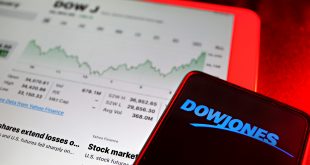Gold price jumped above $2,020, reaching the highest level since March of last year. However, analysts and economists believe that the precious metal could correct lower if higher crude oil price sparks the existing inflation fears.
Gold’s strength was by no means intuitive: after all, the significant rise in the oil price brought about by the decision, taken by the OPEC+ members, pushes up inflation, whereas the fall in the Purchasing Manager’s Index points to faltering economic momentum, which should ease price pressures. The reaction should therefore come as a surprise in the former case in particular.
Higher inflation points to higher interest rates, which should weigh on the gold price. This was probably not the market’s first thought, however. Instead, its first reflex was presumably to switch to ‘crisis’ mode and focus on possible economic risks.
It cannot be ruled out that the gold price will shed at least some of the gains it chalked up yesterday if the higher Oil price sparks inflation fears and thus rate hike speculation.
Gold extended gains on Tuesday and crossed the key $2,000 level as the dollar and yields fell, while weaker US economic data emboldened bets for slower rate hikes despite mounting concerns over oil-led inflation.
Spot gold climbed 1.81% to $2,020.20 per ounce at the time of writing after reaching its highest since March 9, 2022 of $2,024.79 earlier. US gold futures gained 1.8% to $2,036.20.
Tracking gold’s gains, silver jumped 3.2% to $24.75 per ounce, platinum rose 2.7% to $1,011.95, while palladium was up 0.6% at $1,468.52.
Markets are in this very positive backdrop for gold in which we have the slowing of economic data along with inflationary pressures remaining elevated. Burnishing gold’s appeal, especially amongst traders holding other currencies, the dollar added to its losses after data showed US job openings in February dropped to a near two-year low while factory orders also dipped.
A surge in oil prices this week after a surprise output cut by OPEC+ has helped zero-yield gold, traditionally considered the preferred inflation hedge, shake off the usual pressure from the likelihood of interest rate hikes that could be implemented to rein in rising price pressures.
Oil output cut by OPEC+ raised expectations of further rise in global prices, a factor which is the most responsible for the rise in global inflation rates, and then the markets turned to the current negative tone.
ISM Manufacturing PMI reading in the United States reached 46.3 points last March, compared to the previous reading (47.7 points), which came lower than the market expectations (47.5 points).
On Tuesday, the Construction Spending Index in the United States declined to -0.1% last March, compared to the previous reading, which recorded an increase of 0.4%, which came below the levels indicated by expectations in the global financial markets.
From a technical perspective, the gold price is likely to remain strong and stabilize at its current level or even higher. The $2,050 mark could act as an important resistance level, and if breached, prices could quickly soar towards its all-time high.
Markets now see about a 40% chance of the Federal Reserve hiking rates by a quarter basis point in May, with a roughly 60% chance of a pause. More rate hikes could cause gold to unwind some of its recent gains.
 Noor Trends News, Technical Analysis, Educational Tools and Recommendations
Noor Trends News, Technical Analysis, Educational Tools and Recommendations





